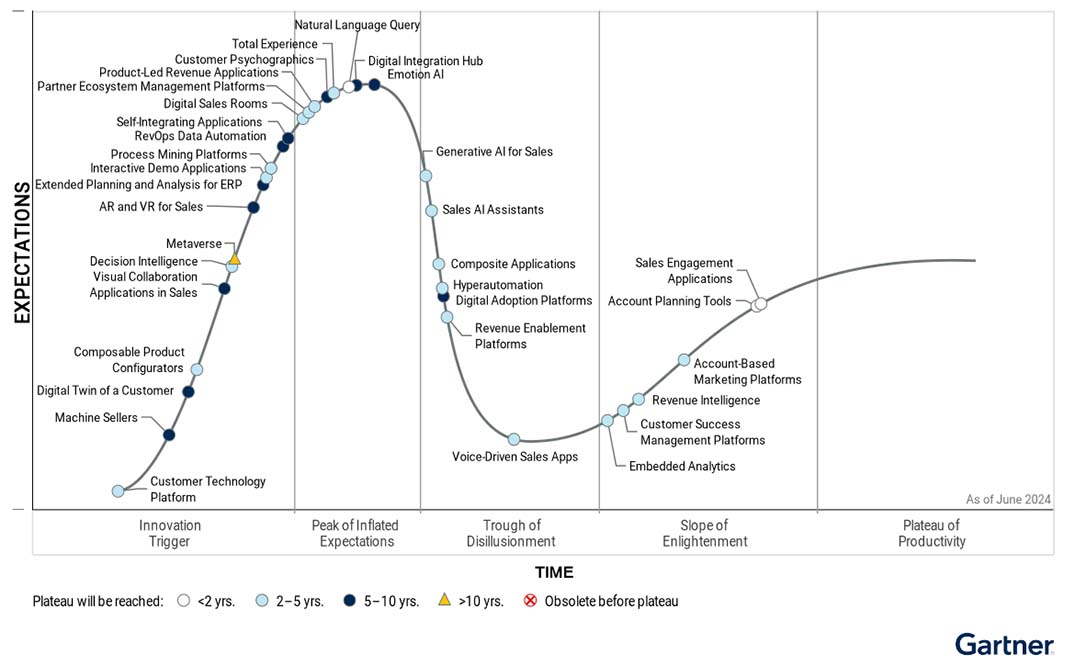Emotion AI, machine sellers, and digital twin of a customer will have a transformative impact on the sales function in the next decade, according to Gartner.
However, sales leaders must closely navigate the hype to evaluate when these technologies will be appropriate for their organisation to implement.
The Gartner Hype Cycle for Revenue and Sales Technology 2024 distills key insights that Gartner profiles each year into a succinct set of “must-know” emerging technologies. These technologies have the potential to deliver transformational benefits over the next two to 10 years.
“The common theme of these three technologies are their ability to predict, interpret and serve buyers’ needs and behaviours, and to streamline and automate sales fulfillment – releasing sellers to focus on developing high value client relationships,” says Guy Wood, senior director analyst in the Gartner Sales practice. “In order to gain a competitive advantage, sales operations leaders need to be looking on the horizon for technologies not currently in the mainstream.”
Emotion AI
Emotion AI, which is at the Peak of Inflated Expectations, uses AI and software techniques to analyse the emotional state of a user via computer vision, audio/voice input, sensors and/or software logic. Emotion AI turns human behavioural attributes into data.
By enabling sales teams to utilise data to actively learn from, and empathise with, the customer emotion AI is poised to dramatically change the sales function.
“Emotion AI has already been widely adopted in contact centres, but the sales function has yet to fully realise the technology’s potential,” says Wood. “However, CSOs must navigate privacy concerns and bias which may be a barrier to successful adoption. For example, privacy and ethics challenges surround psychological profiling – especially when applied to consumers, recruitment prospects, or protected individuals like minors.”
Digital twin of a customer
A digital twin of a customer (DToC) is a dynamic virtual mirror representation of a customer that organisations can use to simulate, emulate, and anticipate behaviour. DToCs, currently at the Innovation Trigger, help organisations better understand their customers and provide a personalised, empathetic service to customers – many of whose buying habits repeatedly change.
“DToCs can transform the way organisations sell products or services and provide customers with better experiences which will result in increased revenue and lasting customer relationships,” says Wood. “DToC can be an engine of transformation and disruption. Organisations need competency in machine learning algorithms and staff with data science skills to build or manage DToCs”
Machine sellers
Machine sellers, at the early stage of the Innovation Trigger, are non-human agents that automate end-to-end selling actions on behalf of human sellers – or a sales organization – to sell products and services in exchange for payment. Currently, machine sellers can be used to facilitate simple and transactional sales.
“Sales organisations deploying machine sellers will gain a competitive advantage by satisfying buyer preferences for seamless purchases and ‘locking-in’ recurring revenue. Organisations that do not adopt machine sellers will risk wasting resources, decreasing efficiency and missing revenue goals,” says Wood.
“However, the impact of machine sellers will not be evenly distributed; it will vary by vertical industry, geography, and business model.”

